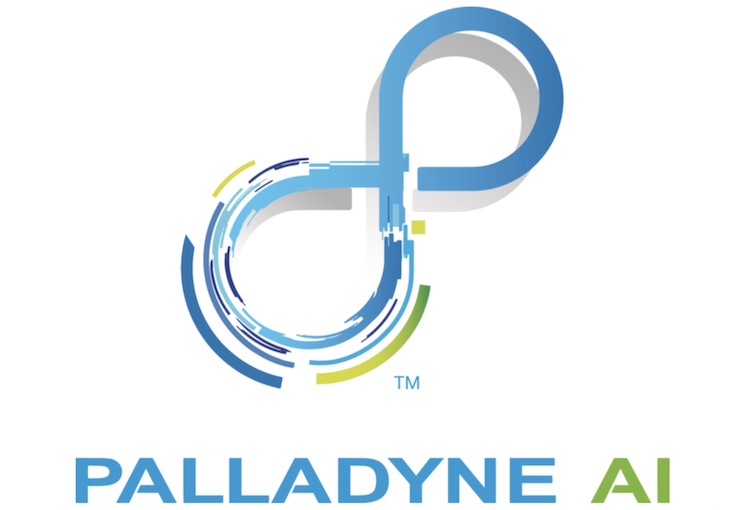
The integration of Artificial Intelligence (AI) with robotic platforms is becoming the future of today, enabling everything from self-driving cars to home robotic systems and aerial autonomy. For the drone industry, AI presents countless opportunities. Recently, Palladyne AI announced that they had begun testing their latest AI platform that can operate a swarm of drones for optimal tactical coverage.
Palladyne was founded by University of Utah Professor Stephen Jacobson as Sarcos Research Corporation in 1983. The company became a pioneer in the development of advanced robotic systems, famous for designing the life-sized robotic dinosaurs for Universal Studios Hollywood’s Jurassic Park ride and the fountains at the Bellagio Hotel in Las Vegas, NV. Over the course of four decades in the robotics industry, Sarcos underwent many corporate changes and shifted its focus toward robotic software rather than hardware. In 2024, the company name was officially changed to Palladyne AI to reflect its commitment to the development of robotic AI software.
This machine learning software has helped Palladyne become the recipient of several government-funded projects, most recently one that partners them with Red Cat Holdings (RCH). As the parent company of Teal Drones, RCH holds one of the largest government contracts as a provider of small drones for military use. Teal Drones was founded by Salt Lake City, UT resident George Mathis in 2014 when he was only 17 years old. Under the umbrella of RCH, Teal Drones quickly became one of the most trusted wholly American-made drone manufacturers. In 2023, their Teal 2 drone earned a spot on the coveted Blue UAS list, a roster of drones that meet all U.S. Department of Defense (DoD) sanctioned regulations.
Through the partnership, Palladyne has installed its Pilot AI Software onto a series of Teal drones, conducting swarm capabilities in multiple field scenarios. Palladyne’s Pilot AI does not require any hardware to be installed on the drones; it works by updating the existing software. There are many benefits to this system, including lower costs, minimal downtime per unit, and no additional weight changes to the drone systems. Additionally, the AI software does not require hours of training for an operator to become proficient in its use. The software learns and teaches the drone exactly what needs to be done, while the operator just has to observe and operate the drone as they have already been trained.
Currently, if a drone pilot were to try to operate multiple drones at once, they would have to input and manage multiple sets of data across multiple platforms. This is not an ideal situation, as Geoff Hitchcock, Chief Revenue Officer of RCH, explained—it takes too much human cognitive responsibility and can lead to grave errors. Palladyne Pilot AI collects and manages all pertinent data collected by a drone or swarm of drones. The AI software then analyzes the data and presents it to the operator, who can make an informed decision about how to respond.
For example, if a drone operator is in pursuit of a suspect fleeing in a vehicle, they upload the known information to the AI software, including the type of vehicle and its last known coordinates. The drone, or drones, use an array of sensors to track the vehicle. These sensors include multiple cameras, GPS, radio transmissions, and more, allowing the drones to actively and accurately track the vehicle. As the drone autonomously tracks the vehicle, all of the cameras and sensors collect data, which is instantly sourced and compiled by the AI system for the observing pilot.
In January 2025, Palladyne stated that they had successfully paired the Pilot AI system with RCH’s Teal 2 drones. They are currently preparing to update the system to accommodate RCH’s Black Widow drones, which have just been selected to be part of the U.S. Army Short Range Reconnaissance Program. “Enabling multiple Teal and Black Widow drones to synthesize and share multi-modal sensor fusion information in real-time will dramatically improve situational awareness in the field,” said Mr. Hitchcock. “Even more compelling is the ability to translate that shared information into autonomous navigation, enabling a single operator to manage multiple drones with a substantially reduced cognitive load and in operational environments with limited connectivity.”
Palladyne AI’s innovative software demonstrates how integrating AI into robotic platforms can create unprecedented opportunities for autonomy, making multi-drone management more streamlined and accessible. With further developments and partnerships, AI will undoubtedly play an even more significant role in shaping the future of robotics and defense.
|